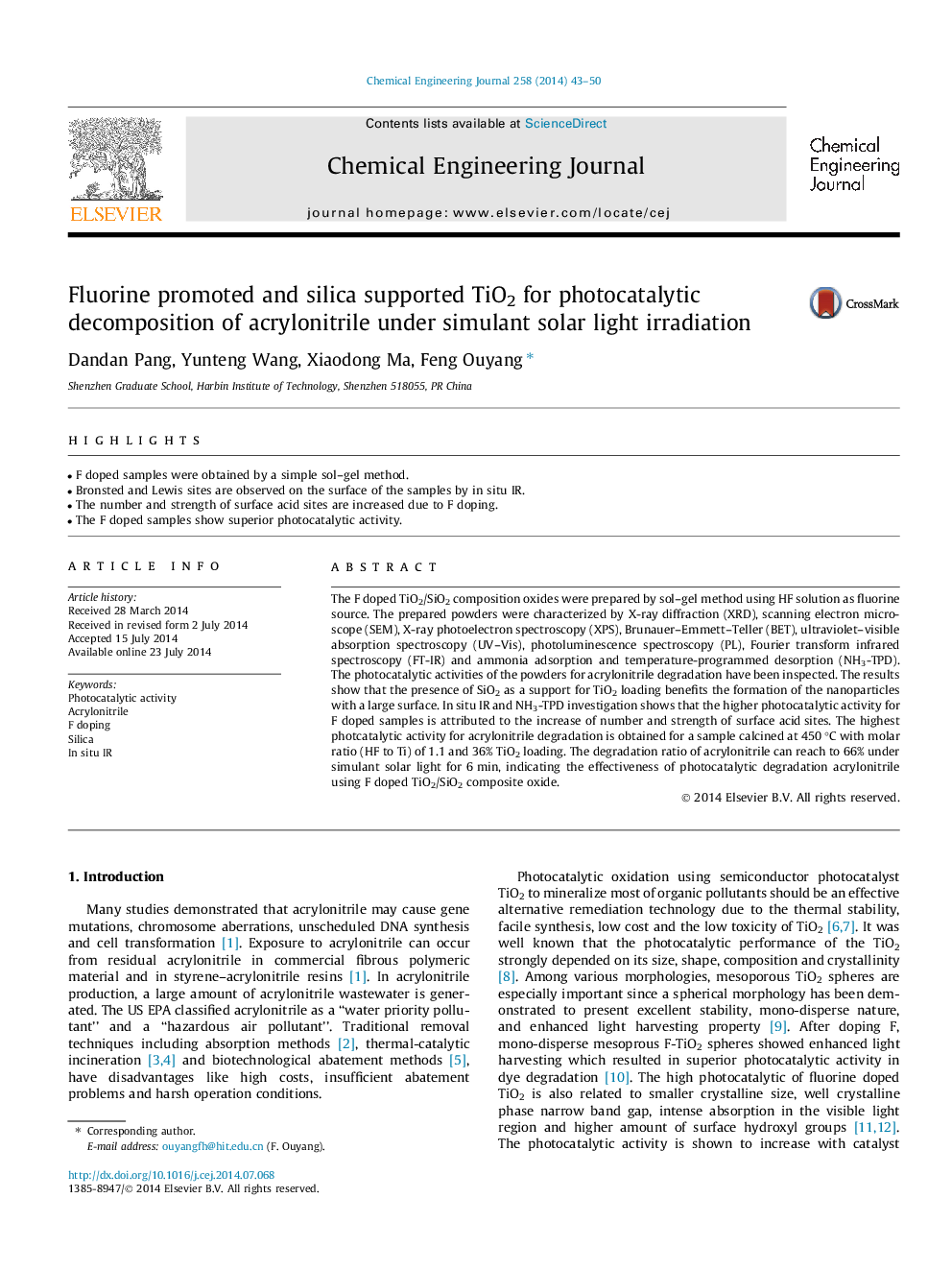| Article ID | Journal | Published Year | Pages | File Type |
|---|---|---|---|---|
| 146938 | Chemical Engineering Journal | 2014 | 8 Pages |
•F doped samples were obtained by a simple sol–gel method.•Bronsted and Lewis sites are observed on the surface of the samples by in situ IR.•The number and strength of surface acid sites are increased due to F doping.•The F doped samples show superior photocatalytic activity.
The F doped TiO2/SiO2 composition oxides were prepared by sol–gel method using HF solution as fluorine source. The prepared powders were characterized by X-ray diffraction (XRD), scanning electron microscope (SEM), X-ray photoelectron spectroscopy (XPS), Brunauer–Emmett–Teller (BET), ultraviolet–visible absorption spectroscopy (UV–Vis), photoluminescence spectroscopy (PL), Fourier transform infrared spectroscopy (FT-IR) and ammonia adsorption and temperature-programmed desorption (NH3-TPD). The photocatalytic activities of the powders for acrylonitrile degradation have been inspected. The results show that the presence of SiO2 as a support for TiO2 loading benefits the formation of the nanoparticles with a large surface. In situ IR and NH3-TPD investigation shows that the higher photocatalytic activity for F doped samples is attributed to the increase of number and strength of surface acid sites. The highest photcatalytic activity for acrylonitrile degradation is obtained for a sample calcined at 450 °C with molar ratio (HF to Ti) of 1.1 and 36% TiO2 loading. The degradation ratio of acrylonitrile can reach to 66% under simulant solar light for 6 min, indicating the effectiveness of photocatalytic degradation acrylonitrile using F doped TiO2/SiO2 composite oxide.
